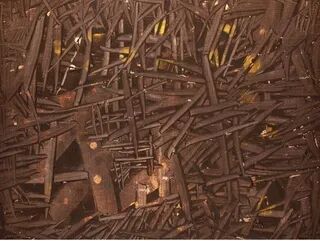
1907 - 1990 Painter, Ceramist
Biography
At the age of sixteen, Antal Bíró left Várpalota, where he had spent his childhood. After travelling through Transdanubia, Transylvania, and the Historical Hungarian Highlands, he also got to Austria and Finland. By 1928, he was already in Paris, where he supported himself through caricature drawing under the name "Bir." He lived in the Montparnasse district and studied painting at the Grande Chaumière Academy from 1932. In 1934, he embarked on another extended trip, this time to North Africa. Upon returning to France, his caricatures gained success not only in Paris. According to newspapers from that time he also went to Rennes, where he became the biggest "attraction" at the Exposition-Foire with his caricatures created on the spot.
Károly Koffán, who lived in Paris from 1933 to 1939, noticed his talent and likely encouraged him to return to Budapest to enroll at the Academy of Fine Arts in 1940. His masters were István Szőnyi and Nándor Lajos Varga. In 1944, he worked with fellow students at the artists' colony in Vámosbalog led by Gyula Rudnay and Nándor Lajos Varga. Among his works from this period, one painting, "Balogi Street," is part of the collection at the Hungarian National Gallery. In 1946, his drawings were published in the Új Hold magazine. In the same year, he went to Rome with a scholarship, then after a two-year stay there, moved to Sweden, where he married. In 1949 he taught at a painting school in the Swedish town of Kinna. In 1950, he exhibited at the Konsthall of Boras and returned to Montparnasse the same year.
Antal Bíró moved to Southern France in 1954 but returned to Paris regularly. Between 1952 and 1958, he participated annually in the Salon des Réalités Nouvelles. In 1956, he held a solo exhibition at Galerie Stiffa in Menton, and in 1959, at the World House Galleries in New York with a show titled Recent Paintings. His works are featured in several American private collections, with his most significant American collector being Charlotte Bergman. The majority of his works in her collection were featured in an exhibition organized by The Art Center in La Jolla, California in 1962.
In 1964, Bíró settled permanently in Menton (living at 32 rue Saint-Michel). From 1968, he participated in three consecutive Menton Biennials. In 1970, he created a ceramic wall piece for the Fourmaintraux Delassus & C.E.C. ceramic factory in Desvres, which has a centuries-old tradition, and in 1971, a fresco for the Saint-Hyacinthe Chapel in Sospel.
In 1972, the Galerie Rencontre presented him with an exhibition titled Formes et Prospective. He taught at the artists' colony in Levrik, Sweden, founded by his wife, in 1973 and 1979.
As a colourist, when applying colours, Bíró was guided by the symbolic meanings of colours: red represented blood and inner life, yellow represented light, and mauve symbolized serenity. In response to a Menton journalist, Jean Bomy, who asked why he became an abstract painter, he answered in the early 1960s: "Because I grew tired of painting figurative pictures. In the painter's search, he is liberated and cleansed. The painter should not replicate what he sees, but depict what he feels. Both abstract and figurative painting is valid if they come from within."
He donated about one hundred of his works to Várpalota. After his death, in 1993, a comprehensive exhibition of his entire oeuvre was held at the Körmendi Gallery, showcasing early Hungarian works as well as lyrical abstract style paintings kept in Hungary and Sweden.
Selected Solo Exhibitions
2017
Nagy Gyula Gallery, Várpalota, Hungary
2012
Kálmán Makláry Fine Arts, Budapest, Hungary
1993
Körmendi Gallery, Budapest, Hungary
1990
G. 88, Konstoram, Sweden
Nagy Gyula Gallery, Várpalota (catalogue), Hungary
1988
Carnolles Museum, Menton, France
1979
Carnolles Museum, Menton, France
1947
Annual exhibitions in Belgium and Stockholm
Group Exhibitions
1991
Budapest Art Expo, Hungary
1968, 1970, 1972
B., P. Europa, Menton, France
1962
Art Center La Jolla, California
1959
World House Galleries, New York
1956
Salon des Réalités Nouvelles, Paris
Galerie Stiffa, Menton, France
1952
Salon des Réalités Nouvelles, Paris
1947
Rome, Catania
PUBLIC COLLECTIONS
Municipal Museum, Menton, France
Art Center La Jolla, California
MOMA, Tel Aviv, Israel
Bezalel National Art Museum, Jerusalem, Israel
Hungarian National Gallery, Budapest, Hungary
Thury Castle, Várpalota, Hungary
Helena Rubinstein Pavilion for Contemporary Art, Tel Aviv, Israel

